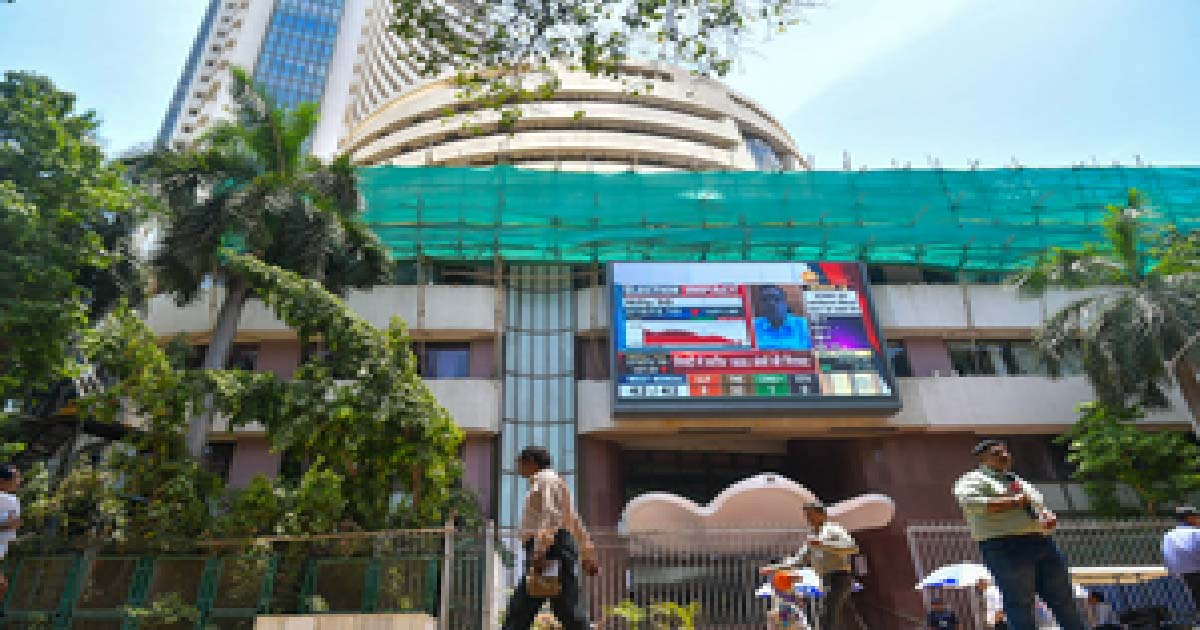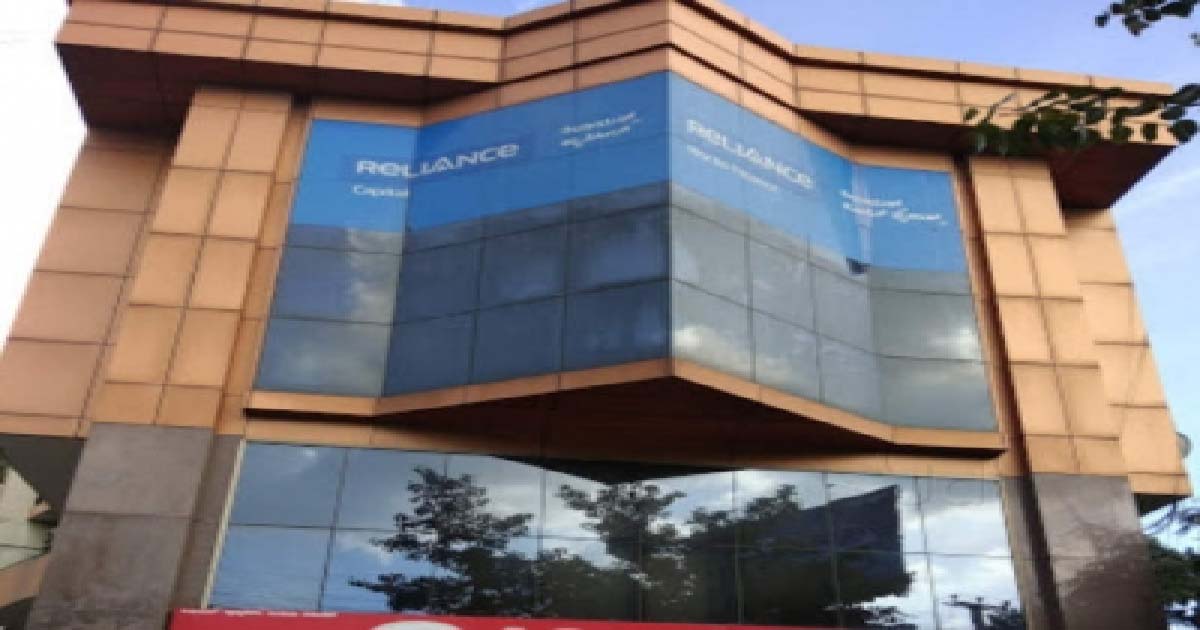Business
Wholesale inflation hits record high in May at 15.88%

India’s wholesale inflation gauged by the Wholesale Price Index, with base year as 2011-12, rose to a record high of 15.88 per cent in May 2022 from 15.08 per cent in April, official data revealed on Tuesday.
The wholesale inflation has been in double digit for over a year now.
The high rate of inflation in May is primarily due to rise in prices of mineral oils, crude petroleum and natural gas, food articles, basic metals, non-food articles, chemicals and chemical products and food products as compared to the corresponding month of the previous year, an official statement said.
The rate of inflation based on WPI Food Index increased from 8.88 per cent in April, 2022 to 10.89 per cent in May, data showed.
Provisional figures of Wholesale Price Index (WPI) are released on 14th of every month (or next working day) with a time lag of two weeks of the reference month and compiled with data received from institutional sources and selected manufacturing units across the country.
Besides, India’s retail inflation for the month of May moderated from the previous month and came in at 7.04 per cent, however, it remained above the central bank RBI’s 6 per cent upper tolerance band for a fifth month in a row.
Reserve Bank of India (RBI) Governor Shaktikanta Das, at the latest monetary policy committee review deliberations, categorically said that the country’s retail inflation is likely to stay above the tolerance level till third quarter of FY23 before moderating below 6 per cent.
Das also said that 75 per cent of the increase in inflation projections can be attributed to the food group.
For FY23, the RBI sees overall inflation at 6.7 per cent, with 7.5 per cent in Q1, 7.4 per cent in Q2, 6.2 per cent in Q3, and 5.8 per cent in Q4, taking into consideration the normal monsoon and average crude oil basket price of $105 per barrel.
Business
Mumbai: RTO Files Criminal Cases Against Uber, Ola, Rapido After Fatal Highway Crash In Mulund

Mumbai: Following the death of a woman passenger in a collision involving a speeding mixer truck and an illegally operated Uber-linked Activa scooter on the Eastern Express Highway, the Regional Transport Office (RTO) has taken serious note of the incident and initiated criminal action directly against the directors of Uber, Ola and Rapido.
Five FIRs have been registered across four police stations, Navghar, Nehru Nagar, Pant Nagar and Amboli. An official of the state transport department said, “We will ensure strict action against all those operating bike taxis in violation of RTO norms, including suspension of licences. No violations will be tolerated.”
According to the FIR filed on December 1 by the Navghar police, the accident occurred at 11am on November 29 beneath the Airoli Flyover on the Eastern Express Highway, Mulund (East). The accused driver, Jawahir Yadav, 40, was allegedly driving a mixer truck at high speed and in a rash and negligent manner when he rammed into an Activa scooter that had been registered on the Uber platform without any transport permit.
The impact left the scooter rider, Ganesh Madhav, seriously injured, while the pillion rider, Shubhangi Magre, 49, died. The Navghar police initially booked the truck driver for causing death by negligence. Subsequently, based on a complaint filed by Motor Vehicle Inspector Ravindra Gawde of the Mumbai East RTO (Wadala), the Navghar police registered a case against the directors of Uber India Systems Pvt Ltd.
Investigations revealed that rider Madhav had registered an Activa scooter belonging to his maternal uncle with Uber without mandatory permission from the transport department. He then reportedly ferried passengers using another scooter (MH 03 EM 4233), also without authorisation. The police have invoked relevant sections of the Bharatiya Nyaya Sanhita, the Motor Vehicles Act, and the Maharashtra Bike Taxi Rules, 2025, against Uber India directors.
The FIR states that Uber violated the conditions of its temporary permit for app-based transport services by allowing unauthorised private scooters to be registered on its platform. Following the Navghar case, RTO officials began booking bike taxi rides through various apps to initiate further action. On December 3, the Nehru Nagar police registered a case against the directors of Roppen Transportation Pvt Ltd (Rapido), stating that the company was illegally operating petrol-engine bike taxis in Mumbai without any licence from the Maharashtra government or Regional Transport Authority.
The Nehru Nagar police filed a second FIR against directors of both Rapido and Uber on December 4. On the same day, the Pant Nagar police also registered a case against Rapido’s directors for similar violations. On December 5, after booking four rides through the Rapido app and one through the Ola app, RTO officials filed another case at the Amboli police station, alleging that both companies were facilitating illegal passenger transport for profit. The police officials said investigations in all cases are underway.
Business
Sensex, Nifty open in green zone amid mixed global cues

Mumbai, Dec 10: Indian benchmark indices opened in green zone on Wednesday after two days of consecutive losses, amid mixed global cues and investor optimism of a US Fed rate cut.
As of 9.30 am, Sensex advanced 231 points, or 0.27 per cent at 84,898 and Nifty added 66 points, or 0.26 per cent to 25,906.
The broadcap indices performed in line with the benchmarks, with the Nifty Midcap 100 up 0.47 per cent and the Nifty Smallcap 100 adding 0.50 per cent.
All the sectoral indices on NSE were trading in the green, with metal, power and realty being the major gainers, up around 0.5 per cent.
Analysts said that liquidity has kept valuations high, justifying selling in the broader markets. A major concern is the excessive delay in the finalisation of the US-India trade deal. US President Donald Trump’s statement on action against India for dumping rice in the US can hurt traders’ sentiments.
Traders expect a third consecutive Fed rate cut on Wednesday (US time) and will focus on the central bank’s latest dot plot, economic projections, and Chair Jerome Powell’s comments, according to reports.
Market fundamentals are turning in favour of India, while higher growth and corporate earnings are achievable in the quarters ahead. The fiscal and monetary stimulus provided this year have started producing results, they added.
The US markets ended mostly in the red zone overnight, as Nasdaq advanced 0.13 per cent, the S&P 500 dropped 0.09 per cent, and the Dow dipped 0.38 per cent.
Most of the Asian markets were trading lower amid investor caution ahead of US Federal Reserve interest rate decision following a weak session on the Wall Street. Further, China’s inflation data also influenced traders’ sentiments as consumer prices edged up 0.7 per cent from a year earlier, its highest level since February last year.
In Asian markets, China’s Shanghai index dipped 0.72 per cent, and Shenzhen dropped 0.56 per cent, Japan’s Nikkei dipped 0.38 per cent, while Hong Kong’s Hang Seng Index lost 0.31 per cent. South Korea’s Kospi added 0.17 per cent.
On Tuesday, foreign institutional investors (FIIs) sold equities worth Rs 3,760 crore, while domestic institutional investors (DIIs) were net buyers of equities worth Rs 6,225 crore.
Business
CBI books Reliance Commercial Finance, its promoters in Rs 57.47 crore bank fraud case

Mumbai, Dec 9: The Central Bureau of Investigation (CBI) on Tuesday said it has filed a criminal case against Reliance Commercial Finance Ltd (RCFL) and its promoters and directors over allegedly causing wrongful loss of Rs 57.47 crore to Bank of Maharashtra.
The case has been registered against RCFL — a company of Reliance ADA Group, its promoters/directors and unknown bank officials, on the allegations of criminal conspiracy, cheating and criminal misconduct and thereby, the CBI said in a statement.
According to the statement, the loan account of Reliance Commercial Finance Ltd was declared an NPA by the bank on March 25, 2020 and also as fraud on October 4, 2025, for causing wrongful loss of Rs 57.47 crore to Bank of Maharashtra.
“RCFL was availing loans to the tune of Rs 9,280 crore from 31 banks/ FIs/NBFCs/Corporate Bodies, etc., including Bank of Maharashtra. A thorough investigation will be conducted into the allegations of defrauding all the banks/FIs, etc. by the accused company,” said the CBI.
The probe agency obtained search warrants from the court of a Special CBI judge, Mumbai and commenced searches at the official premises of RCFL at Mumbai and the residential premises of Devang Pravin Mody, Director of the company, at Pune, on December 9.
“Several incriminating documents have been observed and are being taken into possession during searches. Searches are in progress,” the CBI said.
Meanwhile, the Enforcement Directorate (ED) has filed a supplementary charge sheet against Reliance Power Ltd and 10 others, in the case of fake bank guarantees of Rs 68 crore submitted by Reliance Power Limited to the Solar Energy Corporation of India (SECI) for the purpose of securing a tender issued by it. ED attached the proceeds of crime worth Rs 5.15 crore as well.
Reliance Power Ltd said in a statement that “ED allegations have not yet passed through judicial scrutiny and the Company has not been held guilty of any wrongdoing”.
“As per law settled by the Supreme Court, the company will get an opportunity to put across its case and facts before the court, even before cognisance, so filing of this complaint does not affect the affairs of the company in any manner,” said the company in an exchange filing.
-

 Crime3 years ago
Crime3 years agoClass 10 student jumps to death in Jaipur
-

 Maharashtra1 year ago
Maharashtra1 year agoMumbai Local Train Update: Central Railway’s New Timetable Comes Into Effect; Check Full List Of Revised Timings & Stations
-

 Maharashtra1 year ago
Maharashtra1 year agoMumbai To Go Toll-Free Tonight! Maharashtra Govt Announces Complete Toll Waiver For Light Motor Vehicles At All 5 Entry Points Of City
-

 Maharashtra1 year ago
Maharashtra1 year agoFalse photo of Imtiaz Jaleel’s rally, exposing the fooling conspiracy
-

 National News1 year ago
National News1 year agoMinistry of Railways rolls out Special Drive 4.0 with focus on digitisation, cleanliness, inclusiveness and grievance redressal
-

 Maharashtra1 year ago
Maharashtra1 year agoMaharashtra Elections 2024: Mumbai Metro & BEST Services Extended Till Midnight On Voting Day
-

 National News1 year ago
National News1 year agoJ&K: 4 Jawans Killed, 28 Injured After Bus Carrying BSF Personnel For Poll Duty Falls Into Gorge In Budgam; Terrifying Visuals Surface
-

 Crime1 year ago
Crime1 year agoBaba Siddique Murder: Mumbai Police Unable To Get Lawrence Bishnoi Custody Due To Home Ministry Order, Says Report












